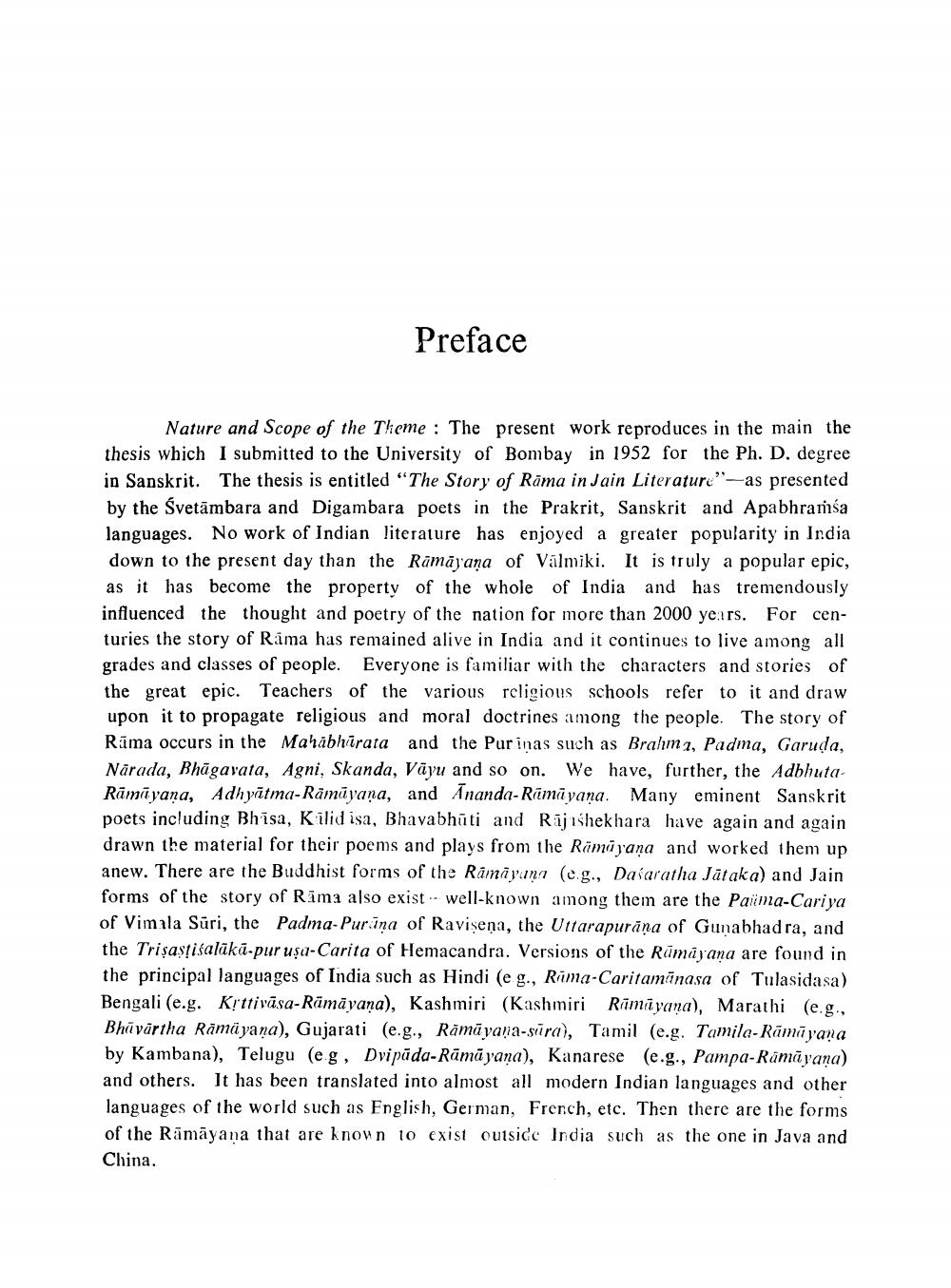________________
Preface
Nature and Scope of the Theme : The present work reproduces in the main the thesis which I submitted to the University of Bombay in 1952 for the Ph. D. degree in Sanskrit. The thesis is entitled "The Story of Rāma in Jain Literature”-as presented by the Svetāmbara and Digambara poets in the Prakrit, Sanskrit and Apabhramsa languages. No work of Indian literature has enjoyed a greater popularity in India down to the present day than the Rāmāyana of Valmiki. It is truly a popular epic, as it has become the property of the whole of India and has tremendously influenced the thought and poetry of the nation for more than 2000 years. For centuries the story of Rama has remained alive in India and it continues to live among all grades and classes of people. Everyone is familiar with the characters and stories of the great epic. Teachers of the various religious schools refer to it and draw upon it to propagate religious and moral doctrines among the people. The story of Rāma occurs in the Mahabhirata and the Purinas such as Brahm 1, Padma, Garuda, Nārada, Bhāgavata, Agni, Skanda, Vāyu and so on. We have, further, the AdbhutaRāmāyana, Adhyātma-Rāmāyaṇa, and Ananda-Rāmāyaṇa. Many eminent Sanskrit poets including Bhisa, Kilid isa, Bhavabhūti and Rajashekhara have again and again drawn the material for their poems and plays from the Ramayana and worked them up anew. There are the Buddhist forms of the Rāmāyuna (e.g., Dasaratha Jātaka) and Jain forms of the story of Rama also exist - well-known among them are the paima-Cari ya of Vimala Sūri, the Padma-Purina of Raviseņa, the Uttarapurāņa of Gunabhadra, and the Trişaspisalākā pur uşa-Carita of Hemacandra. Versions of the Rāmāyana are found in the principal languages of India such as Hindi (e g., Rima-Caritamanasa of Tulasidasa) Bengali (e.g. Kittivāsa-Rāmāyana) Kashmiri (Kashmiri Rāmāyana), Marathi (e.g., Bhāvārtha Rämäyana), Gujarati (e.g., Rāmāyaṇa-sira), Tamil (e.g. Tamila-Rāmāyana by Kambana), Telugu (eg, Dvipūda-Rāmāyana), Kanarese (e.g., Pampa-Rāmāyana) and others. It has been translated into almost all modern Indian languages and other languages of the world such as English, German, French, etc. Then there are the forms of the Rāmāyana that are known 10 exist outside India such as the one in Java and China.




